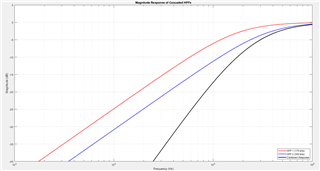Other Parts Discussed in Thread: AWR1642, AWR2944
Tool/software:
Greetings Forum!
I hope this blog finds everyone in the best of health and spirits.
I am working on an application where I have to estimate the range from a vertical concrete wall at a grazing angle of 90 degrees from the radar's frame of reference.
We initially proceeded with a very high range resolution of 3.75cm but given the very wide HPBW of antenna in the azimuth plane, we observed multiple targets in the range profile since the radar considers the 2D patches of antenna illumination as separate targets due to very high range resolution.
Due to this separation of targets, we were getting a very low SNR and per the radar range equation, we were able to estimate the Normalized RCS of the wall as 0.02, an unrealistically low approximation given high reflection ability of concrete for a 77GHz source. We concluded that the RCS of the wall can be increased if individual scatterers can be combined into a single range bin by making the range resolution coarse at 1m.
Subsequently, we were able to observe the wall as a single target on the range profile however, the SNR has decreased instead of increasing.
We are unable to fathom this counterintuitive behavior. Your guidance in this matter is highly solicited.
Moreover, there is a slight confusion in my understanding of how range resolution and spectral resolution are interrelated. Per my understanding, the range resolution is a physical phenomenon governed by c/2B being the minimum distance below which two objects cannot be discerned as separate objects. If I consider each target in radar FOV as being capable to generating a unique beat frequency, it is the spectral resolution that must be fine enough such that each target appears as a separate peak in the range profile after range-FFT. I want to know how the range resolution.
Please correct me if am wrong, the FFT size must be large enough to ensure that the physical limitation of range resolution can be achieved by applying the FFT of appropriate size on the time domain signal.
My waveform specifications ensue below,
Max Range:256m
FFT Size: 256
S=2.92 MHz/μs
T=51.37 μs
B=150 MHz
Fs=5209 KSPS
IFmax=5MHz (governed by Fs, complex baseband architecture)
ΔR=1m
Δf= 20.3KHz
Your guidance for both issues is highly awaited.
Best Regards
Maaz Ali Awan




